On the surface it’s hard to identify the appeal of this so-called sport. Skimming through the world records kept by the International Confederation of Competitive Eating (ICCE) feels more like reading a list of tactics for cruel and unusual punishment: 8 pounds of mayonnaise in 8 minutes, 3 pounds of haggis in 8 minutes, 8.5 pounds of kimchi in 6 minutes.
Just watching the professional gurgitators – the preferred term – strategically stuff themselves, hunched over with eyes watering and scraps of half-chewed food spattering their faces, is enough to make you forget that these competitions are voluntary. Even so, you have to admit that there’s something compelling about it.
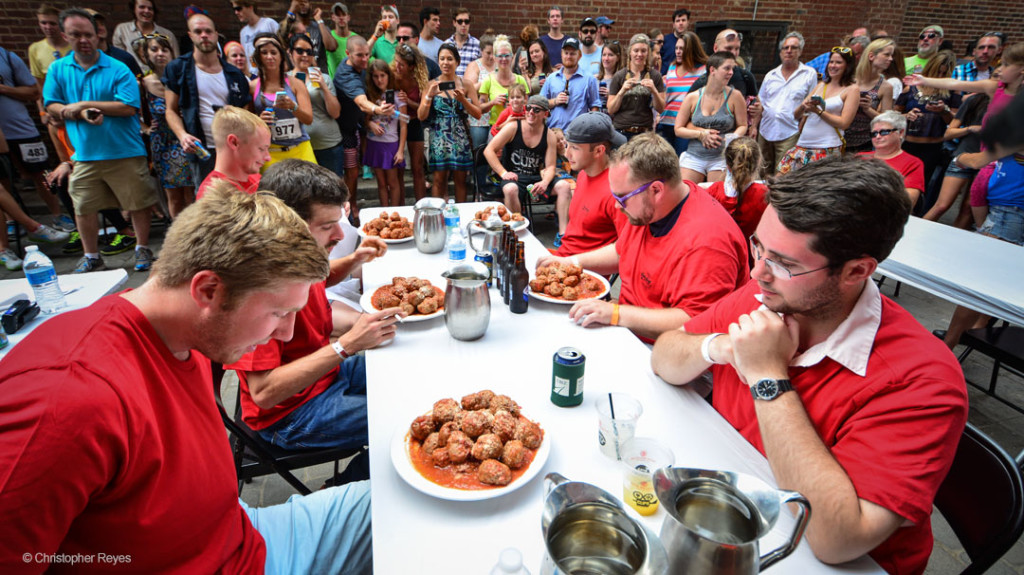
Photo courtesy of Christopher Reyes on bardog.com
Despite its slightly masochistic undertones, competitive eating has been growing as an organized competition since 1972. If it’s not the anticipation of watching someone vomit (which results in disqualification) that draws a crowd, Vivian Halloran suggests it’s the mixed emotions of pleasure and disgust that we get from watching somebody do what everyone wishes they could – overindulge themselves to the point of near-combustion. Maybe that’s true; I’m not ashamed to live vicariously through the guy who gets to shove fistfuls of moon pies down his gullet. It’s all of the excitement without any of the guilt or gut-wrenching pain.
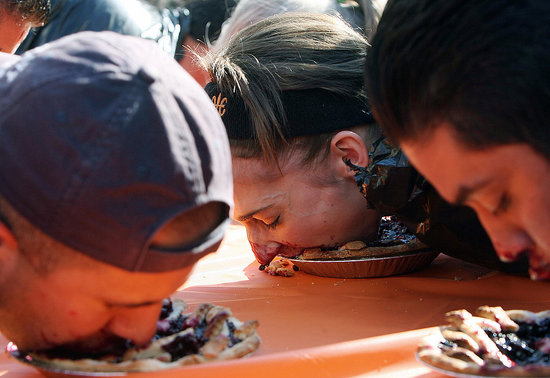
Photo courtesy of popsugar.com
When I say that these gurgitators stuff themselves, I mean they really stuff themselves; like Santa’s sack of toys on Christmas. In a study done by U Penn, the conclusion was made that professional speed eaters can expand their bellies to an unparalleled size. Basically they train their stomach to ignore its satiety reflex, the response that makes your brain tell you you’re full and ultimately cues the urge to vomit.
Their guts of steel are so well trained that, when filled, they act like a “massively distended food-filled sac” that refuses to go through peristalsis to digest the contents. The study was ended against the participant’s will when he consumed so much that the doctors feared a risk of gastric perforation. Now that’s dedication.
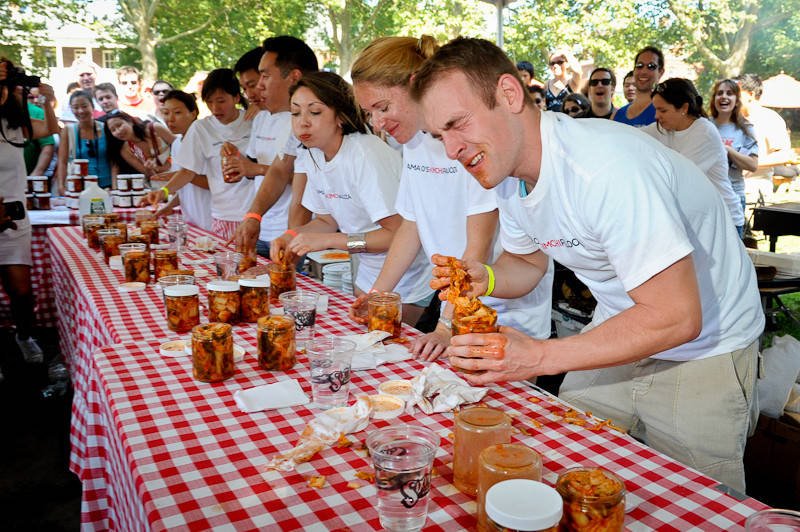
Photo courtesy of thekitchengaily.com
You might be thinking competitive eaters are biological freaks that defy the laws of physiology, hulking men who weigh upwards of 300 pounds. With nicknames like Joey “Jaws” Chestnut, Sonya “The Black Widow” Thomas, and Crazy Legs Conti you would sooner think they’re criminals in a Tarantino movie, but gurgitators are everyday people who come in all shapes and sizes.
Just look at the original reigning champ of the Nathan’s Hot Dog Eating Contest, Takeru “The Tsunami” Kobayashi. Usually slim and fit, his enviable six-pack is even more prominently defined with the pressure of 54 hot dogs pushing behind it.
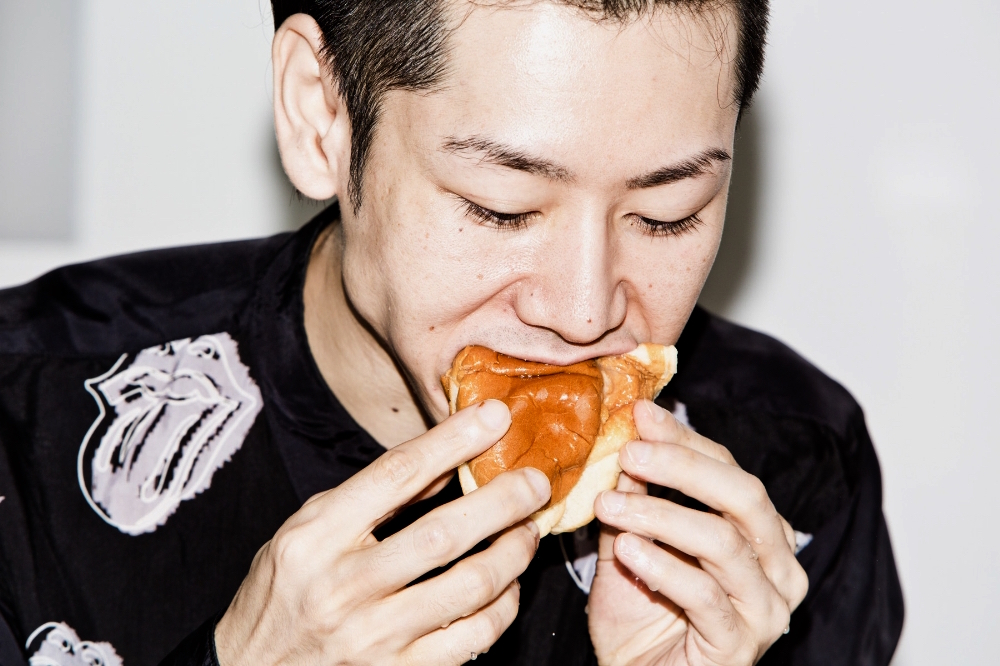
Photo courtesy of Meredith Jenks on vice.com
Apparently this difference in physique between American and Japanese speed eaters comes from differences in training style. According to Vivian Halloran, while most American eaters rely on practice runs at all-you-can-eat restaurants, Japanese competitors tend to choose foods that are dense yet high in fiber, like cabbage. The two countries account for the majority of participants in this absurd test of gastric fortitude.
Oftentimes they find themselves competing across the table from one another, the most famous rivalry being the one between Joey Chestnut and Kobayashi over a variety of foods. After Kobayashi’s contract with the ICCE was terminated in 2007, the rivalry ended and Chestnut went on to win the Nathan’s hot dog competition for 8 consecutive years.

Photo courtesy of www.brisbanetimes.com.au
With all of its training, leagues, and rankings you might consider speed eating a sport. Each different food requires a precise method for breaking up, chewing, and swallowing. Kobayashi developed his own strategy for hot dogs called the “Solomon method” where he separates dog from bun. Crazy Legs Conti – yes, that’s the name on his driver’s license – can even recite the meat-to-bone ration for chicken wings: 0.66 for a paddle and 0.45 for a drum, which helps him prioritize what to eat first.
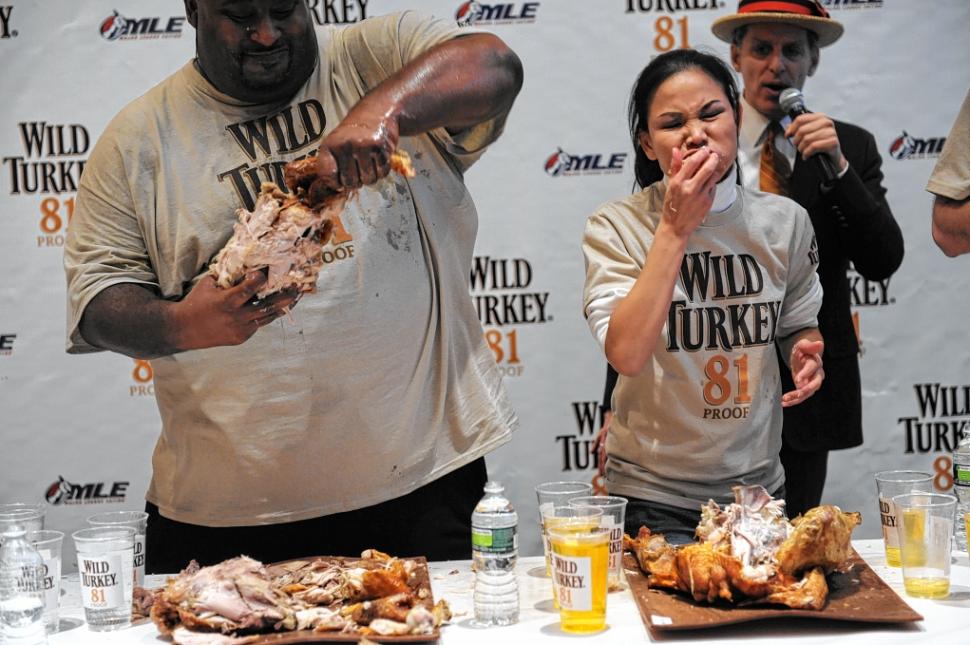
Photo courtesy of David Handschuh on nydailynews.com
But can we really consider this spectacle a sport? It requires no agility, it doesn’t pay much for non-celebrities, and frankly it’s downright nauseating to watch. Without the constraints of time or the accreditation of a league competitors would just be gorging themselves in front of a horrified group of bystanders, but according to the gurgitators the audience doesn’t matter much.
Juliet Lee, an adorable and unassuming 100 pound competitor, explained in an interview with The Atlantic that speed eating has helped her feel proud of her large appetite which she used to be ashamed of. Others choose to do it for the glory, or simply because they love to eat.
In any case the level of mental and physical commitment rivals that of any professional athlete, and the performance draws viewers with a magnetizing curiosity. If it doesn’t qualify as a sport, it should be considered an art form.


